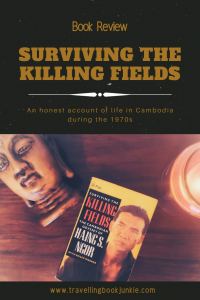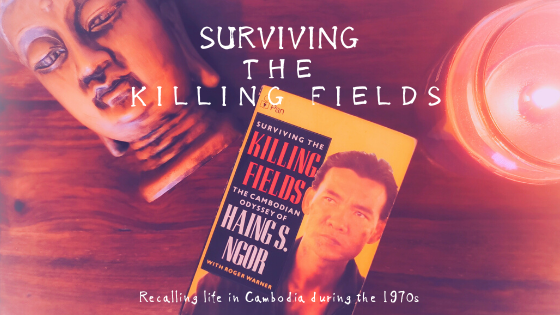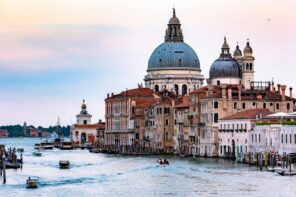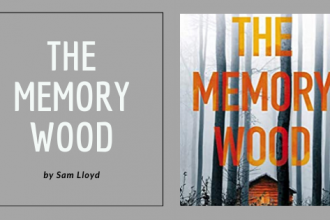“I have been many things in life… But nothing has shaped my life as much as surviving the Pol Pot regime. I am a survivor of the Cambodian holocaust. That’s who I am.” (page 1)
In this emotional retelling, Haing S. Ngor relives the brutal treatments he was exposed to as part of the Khmer Rouge communist era of the late 1970s.
“…under the communists, the country was much worse off… We had no electricity. No clocks or automobiles. No modern medicines. No schools… very little food. And we lived in constant fear of the soldiers.” (page 3)
Reading this account, it is so hard to imagine that people were trying to survive such a dictatorship and that these things were allowed to occur.
It seems, however, that violence is something Ngor has grown up with. Casting his mind back, he can remember hiding under his parent’s table while, as a three-year-old, shots rang out around his village.
During this time, the rest of the world may have thought that Cambodia was a sleepy little country, but those living there knew of a very different place.
In the early chapters, Ngor relives for us his adolescence where he had the freedom to choose whether he followed his father and brother into the family business or whether he remained at school to study medicine. Rebelling, he opted to remain at school, knowing his father disagreed with his choices.
It is through Ngor’s retelling that we begin to gain a picture of Cambodia before the 1970s. He highlights how women would dress modestly and that dating was chaperoned so as not to bring shame to a family.
He remembers a time when Cambodia was run by Sihanouk. It was a time when the guerrillas would occasionally attack but nothing seemed to compare to the uprising and civil war that the 1970s leader, Lon Nol, almost completely tried to ignore.
With the backing of the Americans and more money coming in, the country turned from peace-loving to one which massacred thousands of its own people in an ethnical cleansing.
“Cambodia was no longer an island of peace. It was a nation at war with itself.” (page 61)
Through reading Ngor’s account however, you also begin to realise that at the start of Lon Nol’s regime, it wasn’t necessarily all bad. For those with money living in Phnom Penh life was good. The city was prosperous like never before which meant those benefitting turned a blind eye to what was going on in the villages and shantytowns nearby.
That was until the city of Phnom Penh fell to the Khmer Rouge on the 17th of April 1975.
The new regime insisted that the residents of the city leave immediately heading for the villages and countryside. Day and night they trundled through the streets, following a flow set out by the Khmer Rouge, listening to their propaganda. No longer were people free to wander the streets doing as they wished. Instead, they were forced to follow the regime or face devastating consequences.
The new regime followed Angka’s will. Not that anyone knew who Angka was but each member of the Khmer Rouge happily followed the ways dictated from those above. Many were youngsters, still teenagers and children themselves, who didn’t feel a need to question or had very little education and therefore knew no different. They were happy to follow Angka and the experiment for ‘social reorganisation’.
The Khmer Rouge was hoping to create a new, better nation but the beliefs pushed upon people were anything but.
“… everything about the Khmer Rouge was alien, from China. They borrowed their ideology from Mao Tse-tung, like the concept of the great leap forward. Sending the intellectuals to the countryside to learn from the peasants was an idea of the Chinese Cultural Revolution. ” (page 201).
It seems that the regime was, if anything, moving backward not forward. The Khmer Rouge would often say to the ‘new’ people of the regime that everyone was equal and therefore there was no hierarchy, no class system so why then did they feel a need to punish their fellow man?
“This has got to be worse than Hitler and the Jews. Hilter thought the Jews were different from him, like another race. But the Khmer Rouge kill their own race.” (page 246).
The descriptions in the retelling are often graphic but do come with a warning. If those with a weaker constitution cannot face reading about the true extent of the horrors and torture dished out by the Khmer Rouge you will be alerted ahead of time to skip the chapters. My curiosity, however, got the better of me. I simply couldn’t stop reading. This did, however, leave me drained in places and I had put the book down to reflect on the stories told. How anyone survived the atrocities I simply do not know. I don’t believe for one moment that I would have had the mental strength to continue.
“… somehow I had survived three episodes of torture and prison as well as malaria and dysentery. I was alive. There were scars – scalp wounds, from the third prison; burn scars on my leg, from the second prison; half of my little finger missing, from the first prison. ” (page 313).
Through Ngor, we learn about the atrocities bestowed upon his people but also how they worked together to overcome the hardships. Ngor reflects on a painful but happy time where love flourishes between himself and Huoy, his wife. This is a heart-shattering love story that will have romantics clawing for more details.
It is also, however, a true account of a nation persecuted; an eyewitness account of a full-scale genocide of its people that is incomprehensible and one that we should all know more about. In school, I learnt about the cruelty bestowed upon various nations and races during World War Two at the hands of Hitler, and as a consequence have been morbidly drawn to visit several of the concentration camps, but before reading Surviving the Killing Fields, I knew very little about the suffering of the Cambodian people.
“… the combination of civil war and revolution killed somewhere between a quarter and a half of Cambodia’s population. (page 406)
My Thoughts on Surviving the Killing Fields
Today, many of us wish to travel to Cambodia to visit the great temples of Angkor Wat, but how many truly know about its barbaric past. For anyone wanting to visit, books like this are vital to our education. How can we possibly visit and appreciate all that Cambodia is today if we do not understand the struggles that they have overcome? We owe the people of this wonderful country the time to understand not only its current state but also its past. For me, this is book is still a relevant read today although it was first published back in 1988.
For those not wanting to read this wonderful novel, there is also a motion picture entitled The Killing Fields (1984) starring Haing S. Ngor alongside John Malkovich and Sam Waterston which retells this horrific period in history.
For his part in the film, Haing S. Ngor won several awards including an Academy Award for Best Actor in a Supporting Role. Unfortunately, after surviving the civil war and creating a new life for himself in America, Ngor was murder in 1996 outside his home in Los Angeles. He did not live long enough to see those members of the Khmer Rouge that committed such hateful acts brought to justice.
It was not until 1998, on the same day that their leader Pol Pot died, that justice was finally served to those guilty.
Have you read any books on Cambodia? Would you recommend any to others? Perhaps you have visited the Killing fields for yourself and would like to share your experience with us.
Did you enjoy this article? Then PIN it for later…






